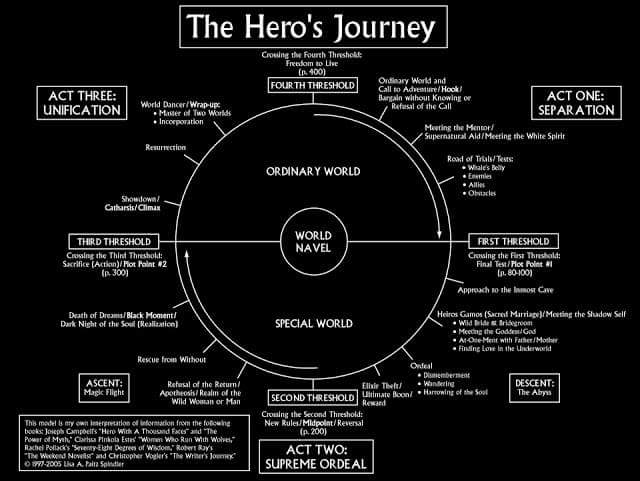To hear an audio spoken word version of this post, click here.
Joseph Campbell’s seminal work1 explores the universal motifs that run through all of the world’s great mythic traditions. This includes not only religion but all narrative storytelling, from literature to songs to film.
A hero who goes on a great adventure, where a great challenge awaits; confronted with a crisis, the Hero has a crucial realization, allowing him to emerge victorious, returning home transformed by the experience. This is a great structure for creative works, as it sets up the narrative in 3 parts, including the exciting climax, with a denouement to wrap up the loose ends.
The only problem is this is not how the world actually operates.
Global events are created by an endless series of incremental decisions, actions, reactions, reconfigurations. Even when great decisive events take place — the assassination of Archduke Ferdinand or the surprise attack on Pearl Harbor — they are the result of countless small predecessor events.
The Hero’s Journey is even less applicable to market matters. A snapshot of the economy at any given moment reveals billions of transactions, each with endless decisions behind them. Try as you will, it is all but impossible to find that one crucial decision that led to an epic crash or systemic failure.
Our narrative bias for compelling stories can prevent us from seeing the forest for trees. Dramatic tales with clearly delineated Good & Evil are more memorable and emotionally resonant than dry data and tedious facts. Try as you might, finding a singular cause of some terrible economic outcome is an exercise in futility. Instead, you will find a long history of political, economic, psychological, and (occasionally) irrational drivers that eventually led to some disaster.
We look for the spark that ignites the room full of hydrogen, instead of 1,000 other factors that created the conditions precedent. You can find example after example of disasters widely thought of as “single event causes;” upon closer examination, they are revealed as the result of far more complex circumstances and countless interactions:
We Work, Uber, and Theranos implosions
Crash of 1987
LTCM collapse
Enron fraud
Dot.com crash
LIBOR scandal
Madoff Ponzi
Great Financial Crisis
The disaster du jour is China’s Evergrande and the inevitable comparisons between its debt crisis and the collapse of Lehman Brothers. (There were other Lehman comparisons before Evergrande).
I am compelled to point out that (*sigh*) No, the collapse of Lehman Brothers did not cause the great financial crisis. $LEH collapse or not, the rest of the house of cards was all going down anyway. Consider all of the forces that led to the GFC as why that framework usually fails.
How bad will Evergrande get? I have no idea.
But I can tell you that the comparisons to Lehman reveal a total ignorance of what caused the financial crisis. That makes me doubt much understanding of a Chinese Property Developer who is missing credit payments and other obligations, and what the Chinese government might do in response. If you do not understand what happened in the USA in 2007-09, then why should we have faith in your predictions of what might happen in China in 2022?
The fall of Lehman is a perfect example of The Power of Myth kind of thinking. Rather than understand all of the factors leading to LEH’s insolvency, instead, we are offered a cinematic alternative, where one big decision changes everything: “Join me, and together we can rule the galaxy as father and son.”
The singular event makes for great cinema . . . but it is a terrible framework for thinking about risk, capital, markets, and economics. Alas, if only real life was as simple as the Hero’s Journey.
Previously:
Could the Fed Have Saved Lehman? (July 27, 2016)
“Precipitating” the Credit Crisis (January 10, 2010)
7 Factors That Led to Crisis (June 4, 2009)
Single vs. Multiple Variable Analysis in Market Forecasts (May 4, 2005)
_______
1. See, e.g., “The Hero with a Thousand Faces” and “The Power of Myth”
click for audio


